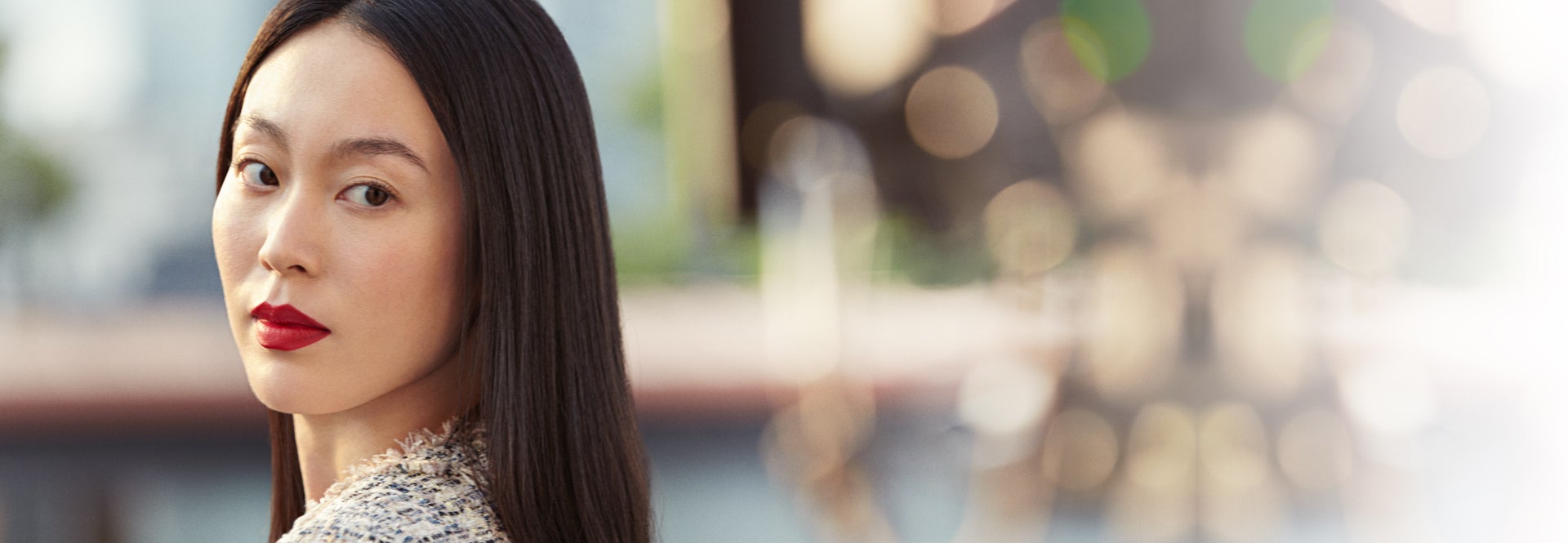
Why fill with RESTYLANE®?
As we age, our skin becomes thinner and less elastic, and its ability to retain water is reduced. The result is the appearance of fine lines and wrinkles, and you may feel that you look tired, old or sad. Treatments with dermal fillers help to restore and maintain your youthful appearance and regain lost confidence.3
RESTYLANE® is a firmer dermal filler that can be used to fill wrinkles where you have good tissue coverage. Restylane® REFYNE™ is a softer and more flexible dermal filler that can be used for treatment of more dynamic areas of your face, for example, around the lips, the nasolabial folds and the marionette lines.4 RESTYLANE® and Restylane® REFYNE™ help you refine your looks and realize your individual needs and desires.
RESTYLANE® and Restylane® REFYNE™ last up to at least 18 months with one retreatment.5
RESTYLANE® and Restylane® REFYNE™ treatment areas
RESTYLANE® and Restylane® REFYNE™ are dermal fillers that are used to reduce lines and wrinkles and give you a refined and natural look. Areas that can be treated are, for example, fine lines around the mouth and eyes, marionette lines and nasolabial folds.
“And if you then all of a sudden see how signs of aging, signs of tiredness or negative expressions are erased from your face, that’s a very positive experience and usually you can see this when the patient looks in the mirror. Their face starts smiling, and that is a very rewarding moment really for an aesthetic doctor.”
Christoph Martschin, dermatologist, Sweden



Your Restylane® treatment
A treatment with Restylane® takes approximately 15-45 minutes, depending on the area that will be treated. Sometimes you might need a touch-up treatment about two weeks after the initial treatment to optimize your results. Most Restylane fillers contain a local anesthetic, lidocaine, that takes away most of the discomfort during treatment.
Immediately after your dermal filler treatment, you may experience some post-treatment side effects, such as redness, swelling, pain, bruising or tenderness at the treatment site. These side effects usually disappear within one week after injection. Though fillers are minimally invasive, they still carry some risks. Before the treatment, you should discuss all possible risks and benefits with your healthcare practitioner.
Restylane® gives you long-lasting but non-permanent results, meaning that you can continuously refine your looks.

How it works
Hyaluronic acid is a substance that has a unique ability to bind water. Hyaluronic acid occurs naturally in our bodies and in all layers of our skin. It keeps your body tissues soft, hydrated and flexible. However, as we age, the body’s ability to produce hyaluronic acid lessens, leading to dry and thinner skin.
Native hyaluronic acid in the body degrades quickly, in one to two days. To make the hyaluronic acid in RESTYLANE® and Restylane® REFYNE™ last longer—for up to 18 months or more with one retreatment6—Galderma has used stabilization technologies that delay degradation.
RESTYLANE® contains a hyaluronic acid gel with a firmer consistency and Restylane® REFYNE™ contains a gel with a more flexible consistency to target different kinds of lines and wrinkles.
RESTYLANE® was the first ever non-animal stabilized hyaluronic acid filler, when it was launched in 1996. It has become the gold standard of dermal fillers and is the injectable filler that every other filler brand is compared with.

Long-lasting results – up to at least 18 months with one treatment.7
96% of patients thought that their results looked natural8
100% of patients saw improvement in their appearance 1 month after treatment9
FREQUENTLY ASKED QUESTIONS
How should I prepare before my consultation?
You will always have a consultation before your first treatment. Think through what you want to achieve and the questions you may have. Your healthcare practitioner will inform you how Restylane fillers can be used in a safe way to suit your own individual aspirations. You will also be asked about your medical history. When you leave your consultation, you should feel well informed about Restylane fillers and you should know what results to expect.
What should I bear in mind when considering a treatment?
First of all, you should always contact a qualified healthcare practitioner to be assured that your dermal filler treatment will be performed correctly. You could always search in national registers of licensed aesthetic treatment specialists. Your treatment should be performed in a medical environment that affords you privacy and is spotlessly clean. You may want to request to see your chosen practitioner’s training certificate and insurance certificate to ensure that he or she is appropriately trained and insured for the treatment.
Who is qualified to administer Restylane treatments?
Only a medically qualified practitioner should perform Restylane treatments. Depending on your country’s legislation, this may include plastic surgeons, cosmetic clinicians, dermatologists, cosmetic dentists, or aesthetic nurses. If in doubt, please see our list of certified clinics/practitioners close to you.
What should I expect from my chosen healthcare practitioner?
You should receive comprehensive information and a detailed explanation regarding your Restylane filler treatment.
• You should be informed of the possibilities and limitations of treatments with hyaluronic acid.
• You should receive information about possible side effects and precautions for treatment.
• You should be informed of the cost of the treatment and possible follow-up treatments.
• Your questions should be answered to your full satisfaction.
What precautions should my healthcare practitioner advise me about?
There are several important precautions to discuss with your healthcare practitioner to ensure satisfactory results and avoid any complications. Discuss the following with your healthcare practitioner:
• If you are taking immunosuppressive medications
• If you are taking aspirin, nonsteroidal anti-inflammatory drugs (NSAIDs) or any other medication that affects bleeding
• If you have any questions about precautions related to the treatment
How is Restylane administered?
First, the healthcare practitioner disinfects the area to be treated. A small amount of the appropriate Restylane filler is then injected into the skin through a fine needle or blunt micro-cannula to fill wrinkles, add volume, shape your face or fill your lips. After the injection, your practitioner may gently massage the treated area to even out the result.
Skin insights
Our portfolio of products
Galderma has developed a diverse portfolio of products that work holistically together.

RELAX
Relax the tension of facial muscles associated with crow´s feet and frown lines to show how you truly feel inside.

REFRESH
Refresh your skin from within with a boost of deep hydration, for a refreshed and vibrant look that lasts.

RENEW
Renew the structure of your skin with a collagen activator that gradually builds the foundation of the youthful, firmer you.
Are you looking for a clinic?
REFERENCES
1 Philipp-Dormston WG et al. Dermatol Surg 2018;44(6):826-832.; Weiss RA et al. Dermatol Surg 2016;42:699–709.; Narins RS et al. Dermatol Surg 2011;37:644–650.
2 Talarico S et al. Dermatol Surg 2015;41:1361–1369.; Rzany B et al. Dermatol Surg 2012;38:1153–1161.
3 Talarico S et al. Dermatol Surg 2015;41:1361–1369.; Rzany B et al. Dermatol Surg 2012;38:1153–1161.
4 Philipp-Dormston WG et al. Dermatol Surg 2018;44(6):826-832.
5 Narins RS et al. Dermatol Surg 2008;34:S2–S8.; Rzany B et al. Dermatol Surg 2017;43:58–65.
6 Narins RS et al. Dermatol Surg 2008;34:S2–S8.; Rzany B et al. Dermatol Surg 2017;43:58–65.
7 Rzany B et al. Dermatol Surg 2017;43:58–65.; Narins RS et al. Dermatol Surg 2008;34:S2–S8.
8 Rzany B et al. Dermatol Surg 2012;38:1153–1161.
9 Swift A et al. Clin Cosmet Investig Dermatol 2017;10:229–238.



